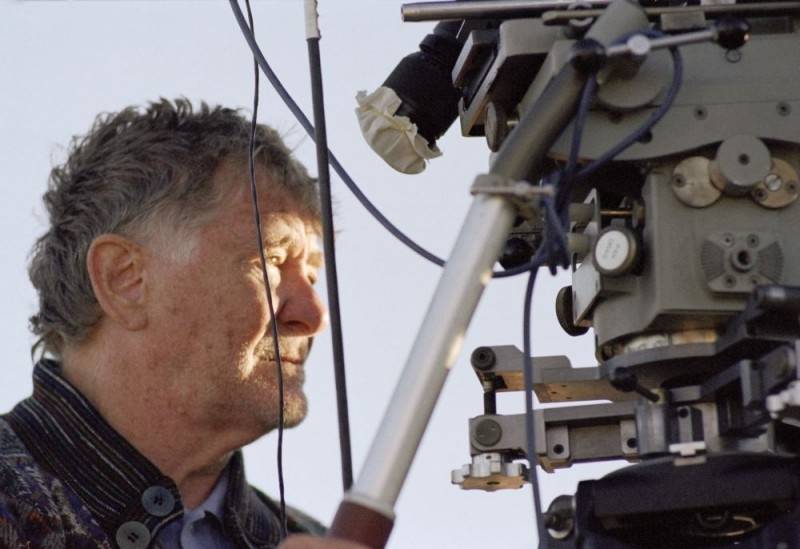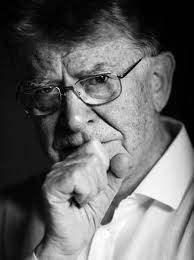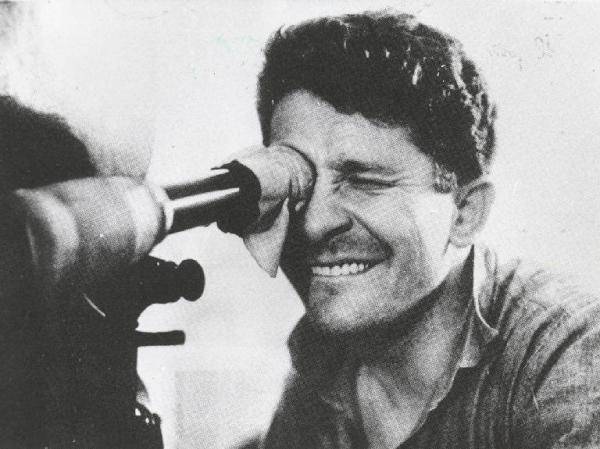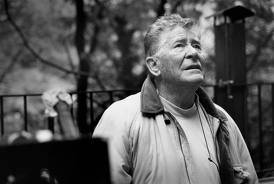The Strength of a Nation: Olmi & Industrial Cinema
On June 2nd, as part of the celebrations of Italy's Festa della Repubblica (Italy's National Day, celebrating the country becoming a Republic on June 2nd, 1946) NUY's Casa Italiana Zerilli Marimo'had a special presentation of three short films by celebrated director Ermanno Olmi drawn from historic works of Italian literature. The event was also a preview of the program Words on Screen, dedicated to the relationship between film and literature.
“One of the true masters of Italian Cinema,” Baroness Zerilli Marimòwrote in a public statement, “Olmi made these films in his youth while working as a technician at the Edison Company. The films, shot in the mid-1950s feature texts by writers such as Leopardi, D'Annunzio and Pasolini and I see them as a very powerful symbol of the spirit and energy essential in bringing Italy from the destruction of the war to the extraordinary achievements of the economic miracle. Having witnessed those moments personally, I express my hope that Italian today might embrace the spirit of those distant years of reconstruction, finding the motivations and the strength they need in a renovated sense of unity and commitment to the common good.”
“These films are a synthesis of how the Italian Republic came to be,” Director of Casa Italiana, Stefano Albertini said, “and how things should be again in order to recover a sense of being that Italy has lost.”
In presenting the films, Albertini quoted Article 1 of the Italian Constitution which states that “Italy is a democratic republic, founded on work,” and Article 9 that says that “The Republic promotes the development of culture and scientific and technical research.” Indeed 2013 has been declared to be the Year of Italian Culture in the US.
The program featured presentations by Francesca Magliuolo, director of Corporate Responsibility for Edison and Sergio Tofetti, director of the Archivio Nazionale del Cinema d'Impresa and of the Piedmont Offices of the Centro Sperimentale di Cinematografia, before showing L'Onda, text by Gabriele D'Annunzio with Giorgio Albertazzi, Dialogo tra un Venditore di Almanacchi e un Passeggere, text by Giacomo Leopardi and Manon Finestra 2, written (uncredited) by Pier Paolo Pasolini (before he came to be the great writer and director that he was).
Ermanno Olmi was born in 1931 in Treviglio, in a deeply catholic family of farmers and workers. He started working at Edison, Italy's leading electric company, when he was only 14, because his father was an employee. “For me Edison was the whole world,” Olmi has often said. non era un’entità quotata in borsa, era vissuta davvero come una grande famiglia. [...] la ricordo come fosse il mio paese.
He started organizing after work recreational activities, mostly theatrical representations. “One was so successful that Edison's CEO asked him what he wanted as a reward,” Magliuolo explained, “Olmi replied he wanted a camera. And that's how it all started.”
From 1953 to 1961 he was commissioned by Edison to shoot a series of documentaries, 40 in total, focusing on the human condition of Edison's workers as well as corporate structures, thus developing a real modern industrial aesthetic. His films focus on themes deeply rooted in the working world, they analyze the oftentimes alienating complexity of the large enterprise and the desire of social promotion.
His thorough chronicles of daily living are carefully injected with psychological insight in the recreation of the rare portraits of workers and operators of the large enterprise that are part of Italian cinema.
Edison, as well as other major companies such as Olivetti, Fiat, Enel, had an internal production department that produced films not only to record the industrial process but also to strengthen company identity and bring workers together. “Today these films recover the historical, economical and cultural memory of a century,” Tofetti explained. “We see the faces of those people who all worked together at a common project, that of helping for the good of the nation and moving the country forward into progress.”
In Manon Finestra 2 (1956) we see workers working at the hydroelectric power plant of Cinego at the foot of the Adamello mountain in Italy.
In Dialogo tra un Venditore di Almanacchi e un Passeggere (1954) Olmi uses the words of one of Leopardi's Operette Morali to think about life, the past and the future.
In L'Onda (1955), one of D'annunzio's most celebrate poems, Olmi presents us with images of waves and the sea.
All of Olmi's documentaries are preserved in the Edison historical film library at the Archivio Nazionale del Cinema d’Impresa in Ivrea.










































i-Italy
Facebook
Google+
This work may not be reproduced, in whole or in part, without prior written permission.
Questo lavoro non può essere riprodotto, in tutto o in parte, senza permesso scritto.